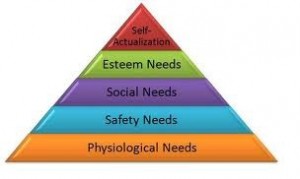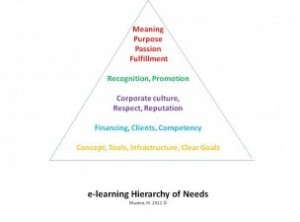Published on
All You Need Is Love! Really?

Yesterday was Valentine’s Day; the day we profess to love, to live on love, to thrive on love and are told that if we just LOVE enough, love will come back to us in the form of antacid tasting sugared candies and everything will be “Just Fine!”
Really? SUPER!
Now on to reality…
We all have needs. We can be needy. We can spot when others have needs. Sometimes it’s all needless. “Need” is a big word. It implies there is a void of X, Y, and sometimes Z. It’s begging to be filled with that unidentified “something”. Often, people and organizations are so quick to see the gap that they rapidly fill their individual and collective needs with the first thing that comes along. This usually doesn’t bode well for anyone. But it’s understandable, to an extent, because human beings are conditioned to fear that void. We want to patch ‘er up and send ‘er on ‘er way. That’s how we are. But that’s not necessarily smart. That’s how greater needs are born.
Before I begin to discuss the learning needs in the e-Learning environment, I feel it’s necessary to fill in any potential gaps of understanding when it comes to our good friend, Maslow. So, for those readers who slept through Psychology 101 in college, I’ll provide a quick refresher course (compliments of that handy online homework helper, About.com: Psychology).
In 1943, “psychologist Abraham Maslow first introduced his concept of a hierarchy of needs in his 1943 paper “A Theory of Human Motivation” and his subsequent book, Motivation and Personality. This hierarchy suggests that people are motivated to fulfill basic needs before moving on to other needs”.

A basic explanation follows:
Five Levels of the Hierarchy of Needs
There are five different levels in Maslow’s hierarchy of needs:
- Physiological Needs: These include the most basic needs that are vital to survival, such as the need for water, air, food and sleep. Maslow believed that these needs are the most basic and instinctive needs in the hierarchy because all needs become secondary until these physiological needs are met.
- Security Needs: These include needs for safety and security. Security needs are important for survival, but they are not as demanding as the physiological needs. Examples of security needs include a desire for steady employment, health insurance, safe neighborhoods and shelter from the environment.
- Social Needs: These include needs for belonging, love and affection. Maslow considered these needs to be less basic than physiological and security needs. Relationships such as friendships, romantic attachments and families help fulfill this need for companionship and acceptance, as does involvement in social, community or religious groups.
- Esteem Needs: After the first three needs have been satisfied, esteem needs becomes increasingly important. These include the need for things that reflect on self-esteem, personal worth, social recognition and accomplishment.
- Self-actualizing Needs: This is the highest level of Maslow’s hierarchy of needs. Self-actualizing people are self-aware, concerned with personal growth, less concerned with the opinions of others and interested fulfilling their potential.
As we can plainly see, love comes in the middle.
It is not the base of all things, nor is it the capstone of our needs hierarchy. It’s rather a supporting cast member. Necessary, worthy and needed… but not the Alpha or Omega of development. Yet how often are choices implemented by an individual and/or organization that are based on an emotional, ‘love’-like reaction (generated by fear of the abyss) to a particular product, solution, or decision?
In other words, how often does passion override common sense?
I hear you laughing. Nervously. It’s ok… we’re all friends here.
Bask in those definitions for a bit. Really get cozy with them. I’m not one to repeat myself so take notes if you must.
Now, what would happen if Maslow’s Hierarchy were tweaked to reflect the necessities of e-Learning? I would imagine it would look something like this:
Five Levels of (e-Learning) Hierarchy of Needs (Maston, H. 2012)
- Concept, Tools, Infrastructure, Clear Goals: Physiological needs
- Financing, Clients, Competency: Security needs.
- Corporate culture, Respect, Reputation: Social needs
- Recognition, Promotion: Esteem needs
- Meaning, Purpose, Passion, Fulfillment: Self-Actualizing needs

As you can clearly see, the LOVE part of the corporate e-Learning environment falls clearly in the middle… once the foundational work is done. However, the good feelings of the LOVE component aren’t what build the individual or company any more than the top tiers satisfy the basic needs of the foundation. All things in good time: with steady and deliberate planning. But it’s more than just the feeling of LOVE that is going to get you where you want to be.
Often we see, and are driven by the need to fill the holes, the gaps, the places in the trajectory of success and implementation with ill-thought-out choices, decisions, programs, and technologies. It’s a human reaction, as Maslow so elegantly lined up. At CarpeLearning, we have a clear vision of the stages to the top and must work hard to undo the impulsive decisions and implementations made by individuals to fill their short-term gaps.
Always ask yourself the question: “You bought the technology, now what?” Don’t fill your need gaps recklessly or make rash decisions based on an emotional LOVE reaction of a quick solution (and reactionary fear of void). Because, as you can clearly see: Love is not all you need!
Peace and good choices!
Adapted from the original piece published on CarpeLearning. Part one of a three-part series. For part two, see All You Need Is Love! Really? (Part 2).
Author Perspective: Business



